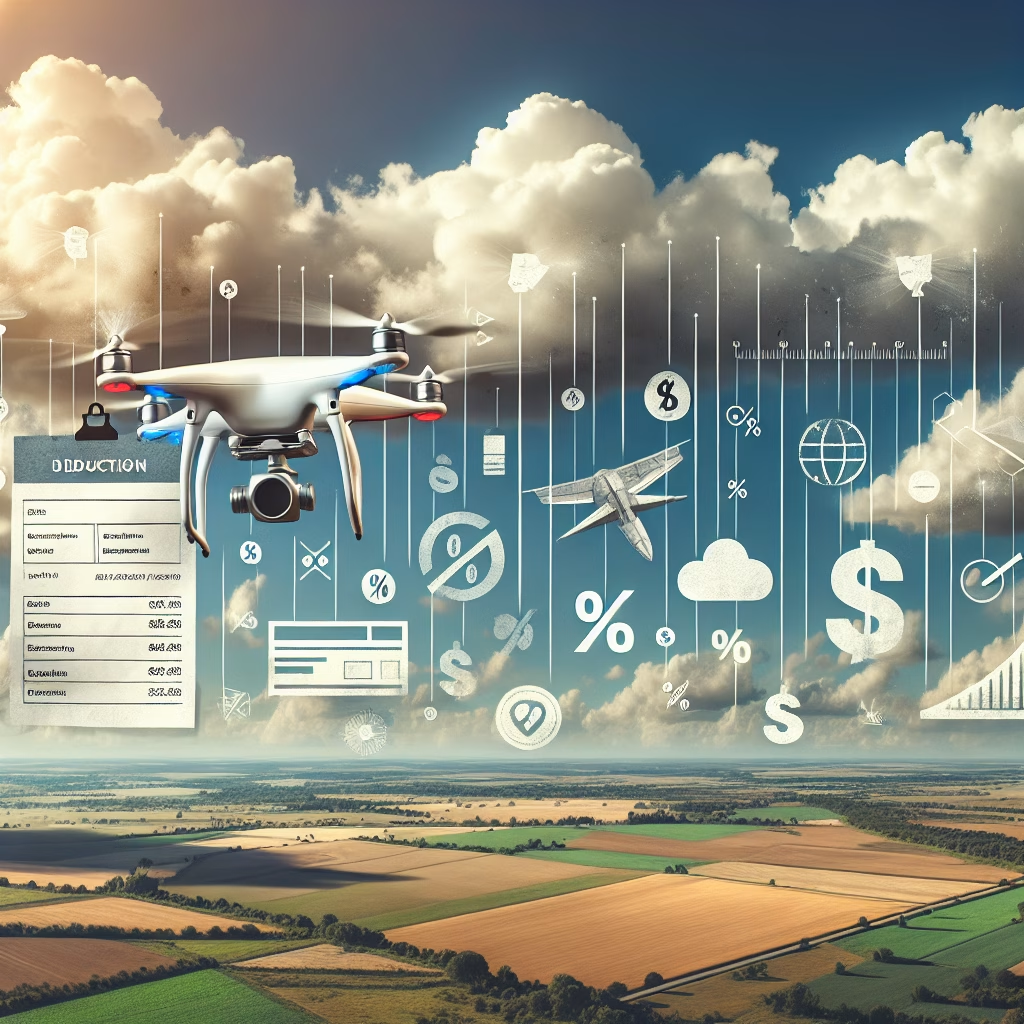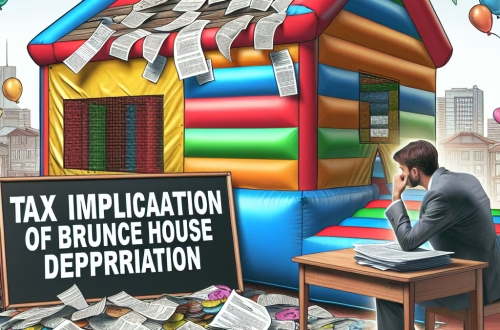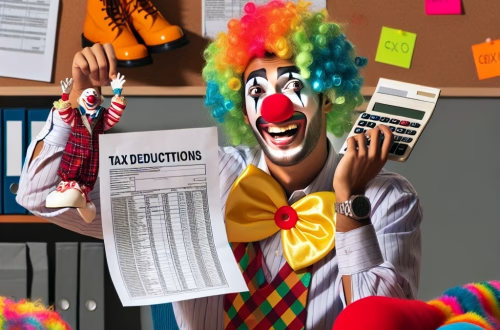Deducting Expenses For Drone Photography Business
Article Summary
Deducting expenses is critical for drone photography businesses to reduce taxable income and maintain operational viability under IRS and state tax codes. This directly impacts sole proprietors, LLCs, and S-Corps using drones commercially. Unique challenges include navigating complex mixed-use asset rules (e.g., drones used for personal recreation), FAA Part 107 compliance costs, and aggressive IRS scrutiny of Schedule C filers. Misclassification of expenses triggers audits, penalties, and interest, while strategic deductions improve cash flow for equipment upgrades and market expansion. State-level variations (e.g., California’s nonconformity with federal depreciation rules) create additional compliance risks for multi-jurisdiction operators.
What This Means for You:
- Immediate Action: Implement IRS-compliant mileage logs (for ground vehicles) and flight-hour tracking systems for drones.
- Financial Risks: Deductions disallowed during audits may incur 20% accuracy-related penalties plus back taxes under IRC § 6662.
- Costs Involved: State add-backs (e.g., New York’s § 612(b)(25)) may limit federal bonus depreciation claims.
- Long-Term Strategy: Sec. 179 expensing elections for drones over $2,500 require meticulous asset-tagging and use documentation.
Explained: Deducting Expenses For Drone Photography Business
Under IRC § 162(a), a tax write-off is an “ordinary and necessary” business expense deductible in the tax year incurred. Federal law defines “ordinary” as common in the drone industry (e.g., FAA licensing fees), while “necessary” implies expenses helpful for income generation (e.g., LiDAR sensors for mapping services). State definitions vary: Texas Tax Code § 171.101 disallows deductions for non-Texas-based drone operation costs, while Colorado Rev. Stat. § 39-22-304(2)(a) requires add-back of federal depreciation differences.
The IRS imposes strict tracing requirements under Reg. § 1.274-5T: Drone photographers must prove business purpose through dated client contracts, geotagged flight metadata, and commercial use time percentages. Personal flights (e.g., recreational) trigger partial disallowance under Reg. § 1.280F-6(d) unless documented separation exists.
”Deducting Expenses For Drone Photography Business” Principles:
The “ordinary and necessary” rule (IRC § 162) permits deduction of industry-specific costs like drone liability insurance or cloud-based photo storage subscriptions. However, expenses must be “directly connected” to revenue activities—terrestrial camera equipment used alongside drones requires separate justification. Mixed-use expenses (e.g., drone batteries used for personal projects) require IRS-approved allocation methods under Rev. Proc. 2003-75 (e.g., flight-hour percentage tracking).
Temporary vs. permanent work locations complicate travel deductions (IRC § 162(a)(2)): A photographer flying a drone at a construction site for 13 months becomes a permanent workplace in IRS eyes, eliminating commute deductions post-Day 1. Apportionment is mandatory under IRC § 274 for entertainment expenses (e.g., client demo flights with meals—only 50% deductible post-2017 TCJA changes).
Standard Deduction vs. Itemized Deductions:
Drone businesses structured as sole proprietorships deduct expenses on Schedule C, bypassing standard deduction limitations ($14,600 single filers in 2024). S-Corp owners file Form 1120-S but lose home office deductions if shareholder meetings occur there (Temp. Reg. § 1.280A-2T). C-Corps itemize deductions on Form 1120, while partnerships use § 703(a)(2)(E) guaranteed payment rules for pilot salaries.
State conformity diverges: Pennsylvania Title 72 § 7303.1 conforms to federal bonus depreciation (100% through 2026), whereas Massachusetts Gen. Laws c. 63 § 31M permanently caps depreciation at 80% of federal amounts. Multi-state photographers must file separate state schedules detailing jurisdiction-specific deductions.
Types of Categories for Individuals:
Independent contractor deductions (Form 1099-NEC filers) include:
- Direct Costs: Drone repairs, propellers, anti-collision lighting (FAA Part 107 compliant)
- Indirect Costs: Adobe Creative Cloud subscriptions (allocated 70% business under Prop. Reg. § 1.263A-1(f))
Employee photographers with W-2 jobs face stricter rules: Unreimbursed work expenses (e.g., drone calibration tools) are not deductible after TCJA suspended miscellaneous itemized deductions until 2025 under IRC § 67(g).
Key Business and Small Business Provisions:
Three specialized deductions apply:
- Section 179: Immediate expensing of drones costing ≤$1.22M in 2024 (Rev. Proc. 2023-34), but requires ≥50% business use.
- Bonus Depreciation: 60% first-year write-off for drones in 2024 (down from 100% in 2023 per TCJA phaseout). Nonconforming states (e.g., Virginia) require separate adjustments.
- Safe Harbor Election: Deduct supplies under $2,500/drone without capitalization (IRS Notice 2015-82).
Record-Keeping and Substantiation Requirements:
Per IRC § 6001, maintain for 3-7 years:
- Flight logs with GPS coordinates, client project codes, and battery consumption rates (proving business use)
- Mileage logs using IRS-approved apps (e.g., Everlance) showing odometer readings pre/post client sites
- Invoices marked “Paid” for software subscriptions tied to drone operations (e.g., Pix4D or DroneDeploy licenses)
Auditors demand reconstruction via “Cohan rule” (Cohan v. Commissioner, 39 F.2d 540) if records are lost—only expenses with “reasonable basis” estimates survive disallowance.
Audit Process:
IRS targets Schedule C filers with:
- Losses in 3+ consecutive years
- $10,000+ auto/equipment deductions without logs
Auditors apply the “Duberstein test” (Duberstein v. Commissioner, 363 U.S. 278) to determine if drone gifts to clients are deductible (must have “detached generosity”). Agent checklists include verifying FAA airspace authorizations match deduction locations.
Choosing a Tax Professional:
Select CPAs with:
- FAA Part 107 knowledge for licensing fee deductions (Form 4562 Line 42)
- Mastery of California FTB § 17201 add-backs for entertainment disallowances
- Experience defending drone audits via IRS Office of Appeals
Laws and Regulations:
Key references:
- IRS Pub. 535 (2024): Details UAV repair vs. improvement capitalization thresholds ($2,500 per Reg. § 1.263(a)-1(f)).
- IRC § 274(l): Disallows entertainment tickets purchased for clients during aerial demo days.
- Rev. Rul. 2018-13: Allows home office deductions (Form 8829) for drone storage/charging areas if exclusively used.
- N.Y. Tax Law § 612(b)(28): Denies deduction for NYC-based photographers’ drone insurance if flight paths cross restricted zones.
People Also Ask:
Q1: Can I deduct my entire $12,000 drone if I use it occasionally for personal photos?
No. Per Reg. § 1.274-5T(c)(3), you must proportion business/personal use. Example: 80% business use allows $9,600 deduction via Sec. 179 (if elected) or depreciation. Document via reconciled flight logs quarterly.
Q2: Are storm damage repairs to drones deductible?
Yes—as “casualty losses” on Form 4684 (sole proprietors) if declared federally recognized disaster area (IRC § 165(i)). Regular wear-and-tear repairs follow § 162 rules.
Q3: Can I deduct satellite internet for rural drone operations?
Yes—100% as “business connectivity expense” under IRC § 162(a) if solely used for drone data transmission (FAA remote ID compliance). Proof required: ISP statements showing business-only usage.
Q4: Do fees for recreational drone permits qualify for deductions?
No. FAA Part 101 recreational permits (e.g., LAANC authorization apps) relate to personal use, making fees nondeductible per IRC § 262.
Q5: Is drone training for new pilots deductible?
Yes—as employee education under IRC § 162 if required to maintain FAA Part 107 currency or learn new FAA-mandated tech (e.g., next-gen remote ID modules).
Extra Information:
– IRS Publication 535: Business expenses guide covering entity-specific rules for equipment deductions.
– FAA Drone Zone: Tracks regulatory costs (e.g., Part 107 renewal fees) deductible under IRC § 162.
– Delaware Drone Tax Guide: Illustrates state-specific R&D credit for drone software developers.
Expert Opinion:
Drone photography tax compliance requires forensic-level documentation of all flight activities and equipment usage ratios. Strategically aligning Section 179 elections with state conformity rules maximizes cash flow while avoiding underpayment penalties from aggressive FAA-related expense deductions.
Key Terms:
- FAA Part 107 business expense deductions
- IRS Section 179 drone depreciation rules
- Mixed-use UAV tax allocation methods
- Drone photography Schedule C audit triggers
- State add-back laws for UAV equipment
*featured image sourced by DallE-3





